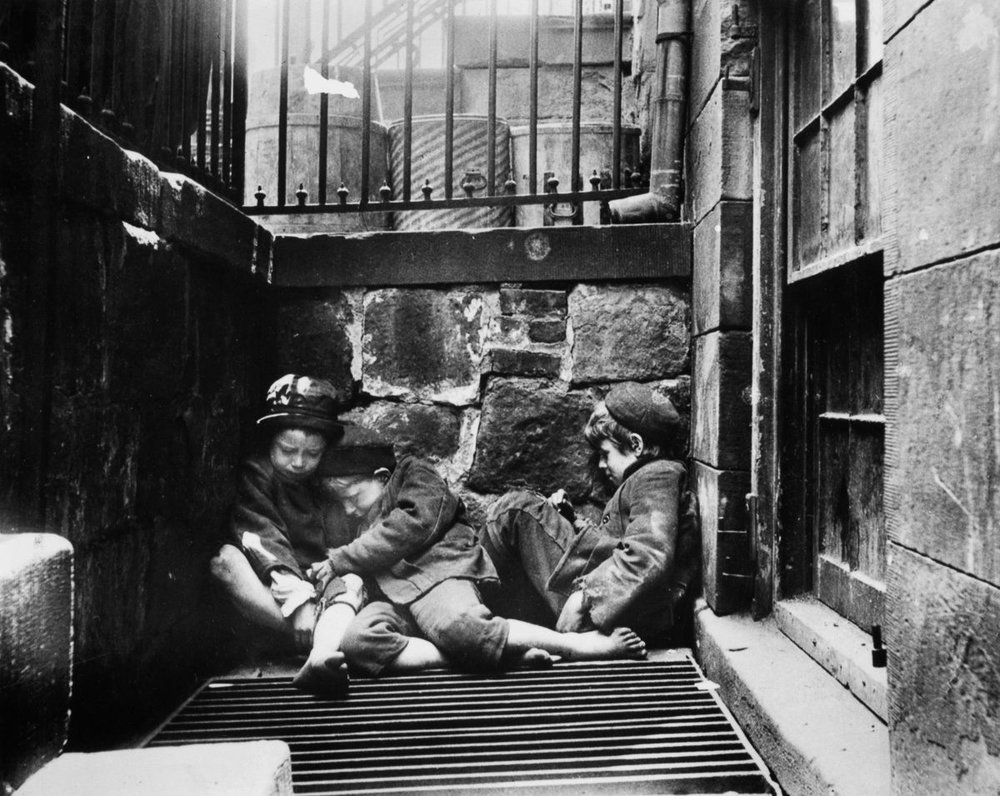What remains of the legendary Collect Pond has been turned in to a sanctuary for modern New Yorkers living downtown in Manhattan. Renamed the Collect Pond Park, it now has benches, trees, grass, and all that good park stuff! It leaves people wondering what the original pond used to look like or why it was filled up.

The Collect Pond is filled by an underground spring in New York City. It was used as a source of drinking water back in the 1700s, fast forward to the early 1800s the once pristine pond became… well contaminated.
“…as the rise of industry started to affect New York City’s natural resource; the neighboring slaughterhouses, tanneries, breweries and other local shops began dumping their waste into Collect Pond.”
In 1811 the Collect Pond was filled in and shortly after new homes were made over the filled in pond. The new neighborhood took on the name Paradise Square. All seemed well until the 1820s, Paradise was sinking and stinking. As stated before, the Collect Pond is a spring fed pond, therefore, would never dry up. Ergo, it wouldn’t be the safest place to build houses over. Not to mention the stench which forced the wealthier members of the neighborhood to move which was most likely caused by the fact that the water was polluted.
Contaminated water is never good for anyone and, of course, with it came the spread of diseases like cholera. Cholera is a bacterial disease which can be caught by drinking contaminated water.
Deriving from the Bay of Bengal, the disease made its way to North America through the transatlantic trade and spread across the United States through waterways such as the Erie Canal. Cholera officially hit New York City in the Summer of 1832.
When discussing the mentality of upperclassmen in New York City during the epidemic in his New York Times article, How Epidemics Helped Shape the Modern Metropolis,
“If you got cholera, it was your own fault.”

Although wealthier residents of Manhattan were able to move away from affected areas and could obtain clean drinking water, the poorer communities were not able to afford such luxuries. Neighborhoods like Paradise Square soon became a slum for poor immigrants and was renamed “Five Points” for the five streets (Mulberry Street, Anthony Street, Cross Street, Orange Street, and Little Water Street, according to the NYC Park article on the Collect Pond) plagued with gang activity. It was no secret in this time that landlords would allow overcrowding in apartment buildings. This in turn allowed for diseases like cholera to spread rapidly through immigrant populations due to poor hygiene, living conditions and lack of access to clean water.

It was apparent socioeconomic status played a role in who was affected. The disease had noticeably appeared in city slums where the poor and immigrant population resided, mostly packed together.
In the 1890s, muckraking journalist Jacob Riis published a book, How the Other Half Lives, to expose how the poorer communities in New York City were living.
Dr. John Snow, a physician from London had found the connection between the spread of cholera and water. In his New York Times article, How Epidemics Helped Shape the Modern Metropolis, Wilford states,
“Dr. Snow tested the idea by plotting cholera cases on a map of Soho. This showed that most of the victims drew their water from a public pump on Broad (now Broadwick) Street.”
By bringing this to the attention of the Board of Health, this discovery helped New York City by making efforts to clean up the city. Sanitation became an important part of living and helped prevent the spread of cholera and other diseases that derive from germs.
The Collect Pond has been long buried since the early 1800s, however, the neighborhood built over it no longer exists. According to the NYC Parks website, after Jacob Riis’s book was published, the area once known as Five Points was transformed into what we now know as Civic Center. It is there were the Collect Pond Park resides as a form of memorial for the pond that once existed there.
References:
“Collect Pond Park.” Collect Pond Park Highlights : NYC Parks, www.nycgovparks.org/parks/collect-pond-park/history.
Shah, Sonia. “Mapping Cholera | A Tale of Two Cities.” Mapping Cholera | A Tale of Two Cities, choleramap.pulitzercenter.org/.
“What Lies Beneath: A History of Collect Pond.” Tenement Museum, 12 Apr. 2016, www.tenement.org/blog/what-lies-beneath-a-history-of-collect-pond/.
Wilford, John Noble. “How Epidemics Helped Shape the Modern Metropolis.” The New York Times, The New York Times, 15 Apr. 2008, www.nytimes.com/2008/04/15/science/15chol.html.